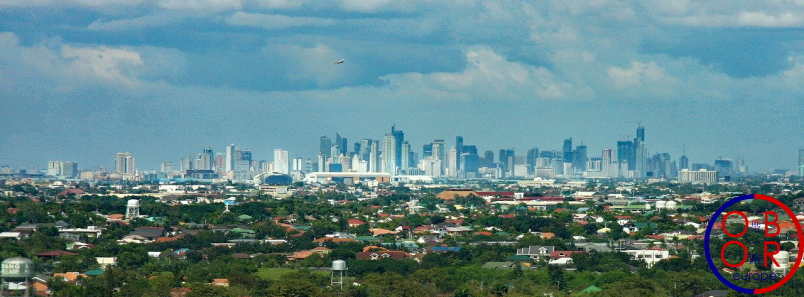by Dr. Sebastien Goulard

The Philippines is a large archipelago made of more than 7,600 islands (of which 2,000 are inhabited), but most economic activities are concentrated in the congested Metro Manila region.
Since President Xi Jinping’s state visit in November 2018, exchanges and integration between the China and the Philippines have accelerated.
The Philippines was the last country China’s Minister of Foreign Affairs and State Councilor Wang Yi visited during his mini-tour to ASEAN countries in mid-January 2021. Relations between Beijing and Manilla have dramatically improved under President Duterte’s presidency. The two countries are searching for peaceful solutions in the South China sea.
The two countries have agreed to cooperate on infrastructure for the next ten years. This cooperation will, in all probability, be accommodated within the framework of the “Belt and Road Initiative (BRI)”.
China has shown an interest in “AmBisyon Natin 2040” the Philippines’s national strategy plan and Duterte’s “Build Build Build” programme. These two programmes aim at better connecting Philippines islands and develop economic hubs outside of Luzon island.
AmBisyon Natin 2040
The ‘’AmBisyon Natin 2040’’ is a twenty-five-year long term vision developed under the previous presidency (and partly amended through participatory democracy) and then adopted by President Duterte’s administration.
The overall objective of “AmBisyon Natin 2040” is to reduce poverty and make the Philippines a middle-class society.
To achieve this goal, the Philippines’ National Economic and Development Authority (NEDA) has set a number of priorities including the continuation of tax reforms, the development of the rural economy, further investment in human capital, the improvement of social protection programmes and the acceleration of infrastructure spending.
NEDA has identified housing, manufacturing, education, agriculture, tourism, health and financial services as priority business activity sectors. This multidimensional plan should attract foreign investors that are looking for new opportunities in this emerging economy.
When visiting China in October 2016, President Duterte gained access to USD $9 billion loans from Chinese credit facilities that will be offered to Philippines’ companies. President Duterte also sought and received advice from China and other Asian economies that have succeeded in reducing poverty in order to apply similar policies in the Philippines.
Build! Build! Build!
To accelerate the implementation of “AmBisyon Natin 2040”, President Duterte has launched the “Build! Build! Build! (BBB)” programme. This initiative is intended to assist in solving the infrastructure shortfall issue that the Philippines has faced for years.
By 2022 and the democratically timetabled end of Duterte administration, infrastructure spending is targeted to hit 7% of GDP (compared to 2.9% during the previous administration). About €140 billion of this has been allocated to infrastructure construction in the 2017-2023 period. It includes the development of more than 20,000 projects (including roads, hospitals, schools). Among those projects are certain flagship constructions such as the Bulacan International Airport near Manila whose construction started in October 2020, the Mindanao Railway and the long-anticipated Manila subway.
These projects will be financed through a combination of ODA (Official Development Assistance), public private partnership, private and public sector investment. Some projects will also be financed through Chinese loans or assistance. For example, the Binondo-Intramuros Bridge (due to complete in September 2021) was funded under the auspices of the ‘China Aid Bridges Project’.
Although the current pandemic has slow down progress in some of the projects, it is estimated that “Build Build Build” will have created up to 1.5 million jobs in 2020-2021. These projects will also speed up in the post-Covid recovery.
Integration with the BRI?
Like the BRI, the Philippines’ national development strategy has a strong infrastructure dimension, and there is ample room for cooperation between the BRI and the BBB program. The initial launch of the BRI was strongly supported by former Philippine President Arroyo.
The development of the new infrastructure planned for under the BBB will ease the growth of exports from the Philippines, improving access to the many Philippines islands and opening up exciting new destinations for Chinese tourists (1.7 million Chinese tourists visited the Philippines in 2019, second only to visitors from South Korea).
During his visit in mid-January, China’s Minister of Foreign Affairs and State Councilor Wang Yi met with Philippine Foreign Secretary Teodoro Locsin and signed several agreements regarding e-commerce and finance and agreed to uphold continued cooperation and facilitate exchanges between the two countries.
Through a combination of the BRI and the BBB, the Philippines should be able to develop stronger links with China and other Asian countries.
Investment in new infrastructure via the BBB will contribute towards a reduction in territorial inequalities in Philippines and help to make the country more stable and attractive. The “Ambisyon Nati 2040” will also give more purchasing power to Filipinos and could help create new market opportunities for European companies and investors.
Share the post "China’s BRI in some ASEAN countries (4/4): The Philippines’ BBB"
